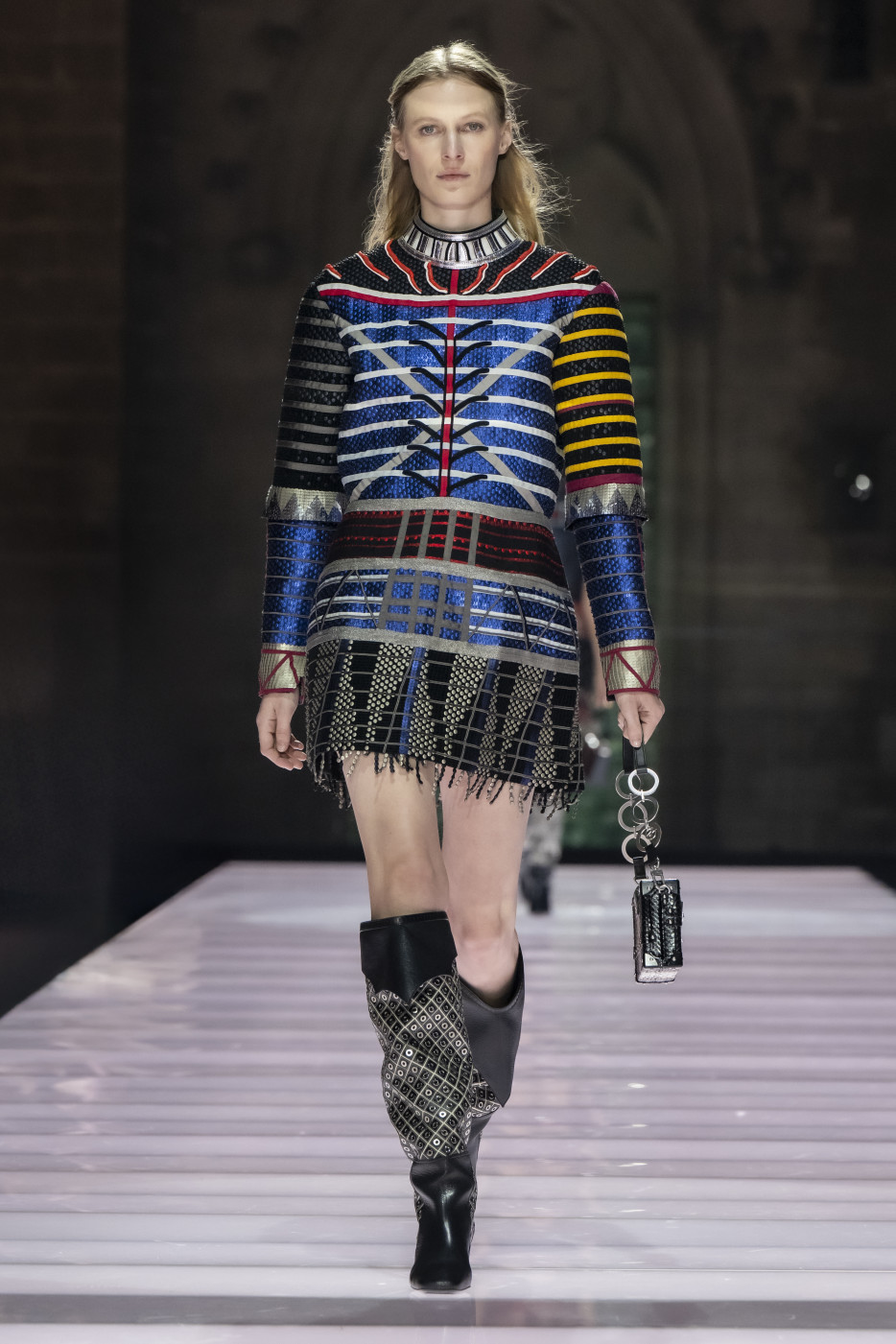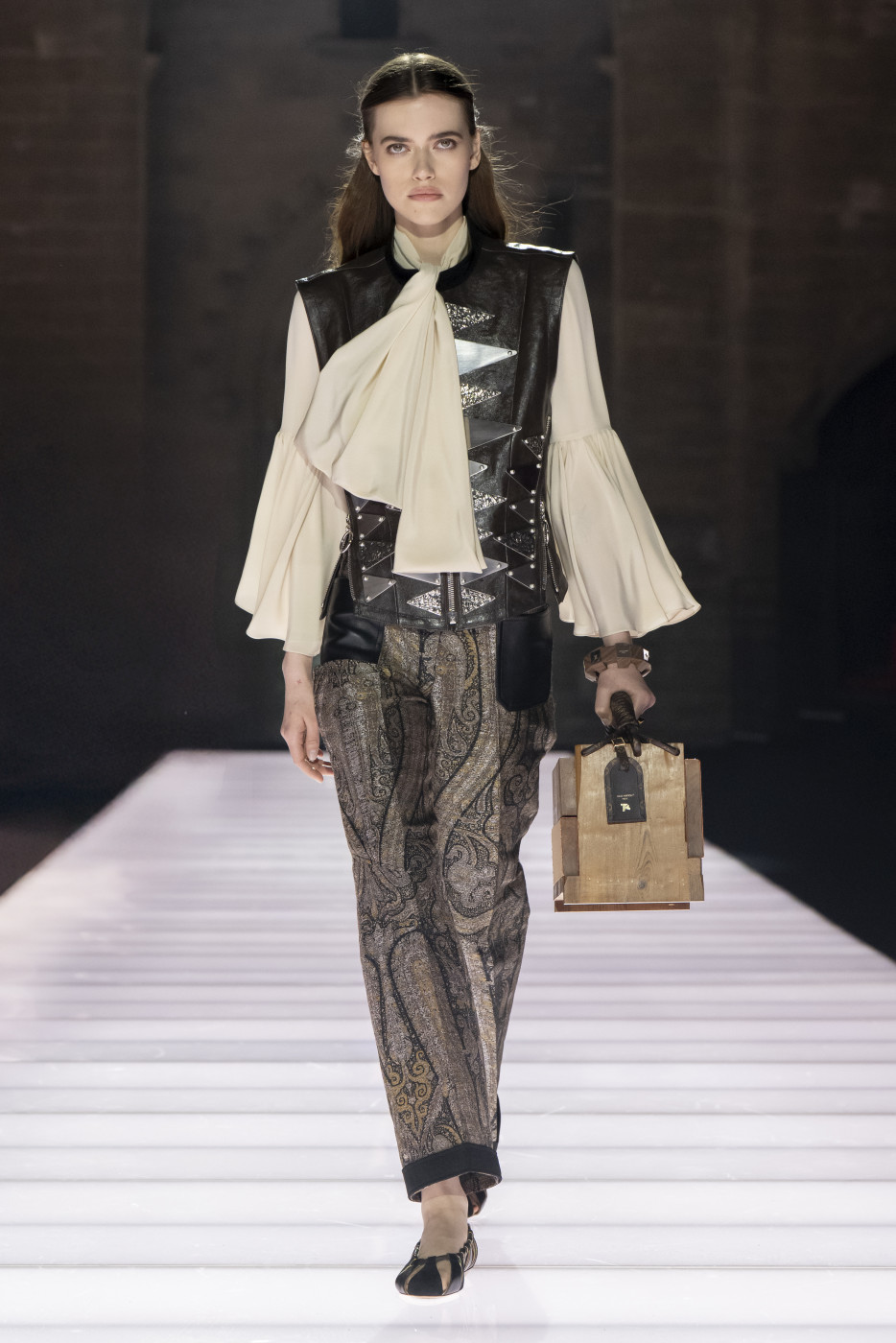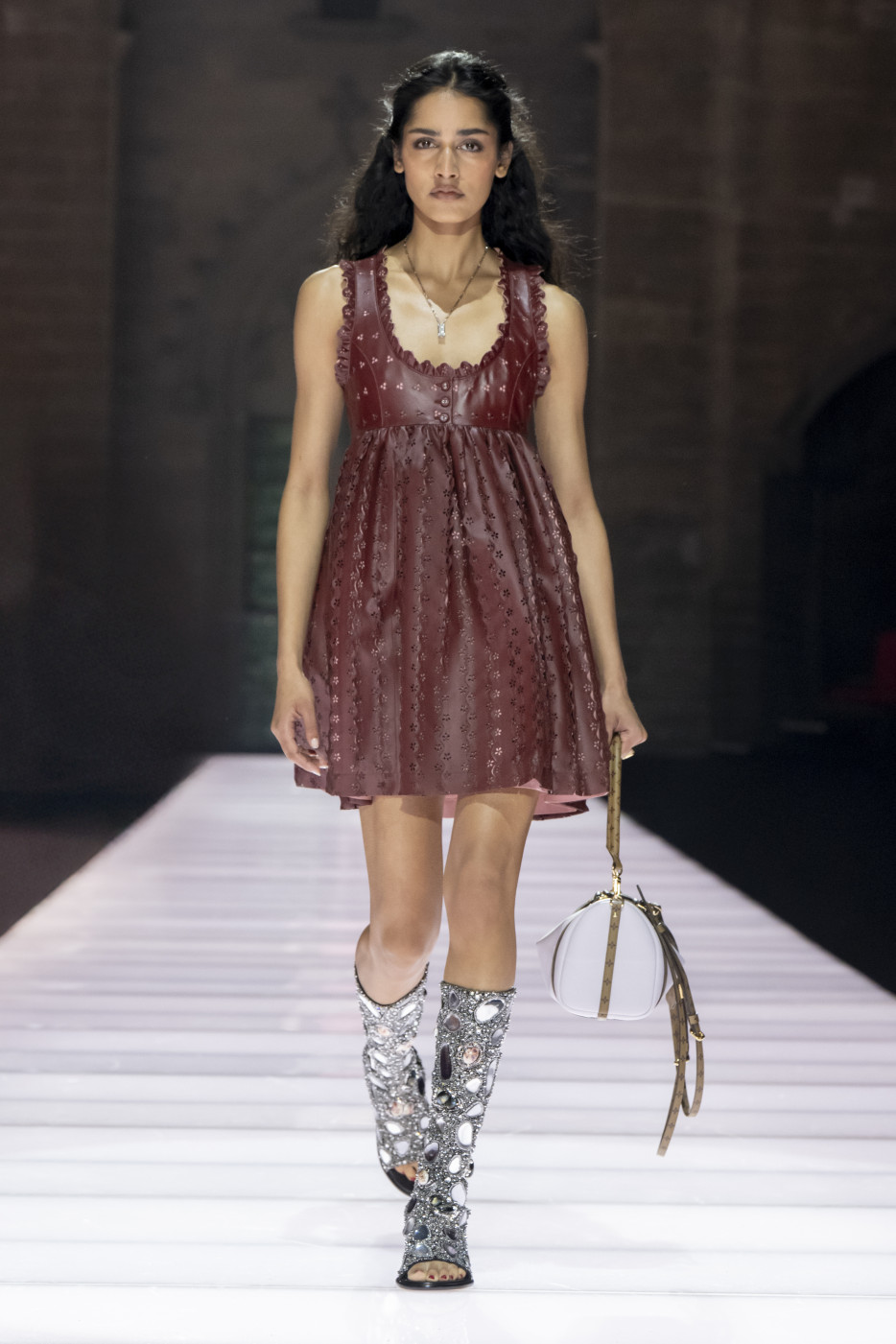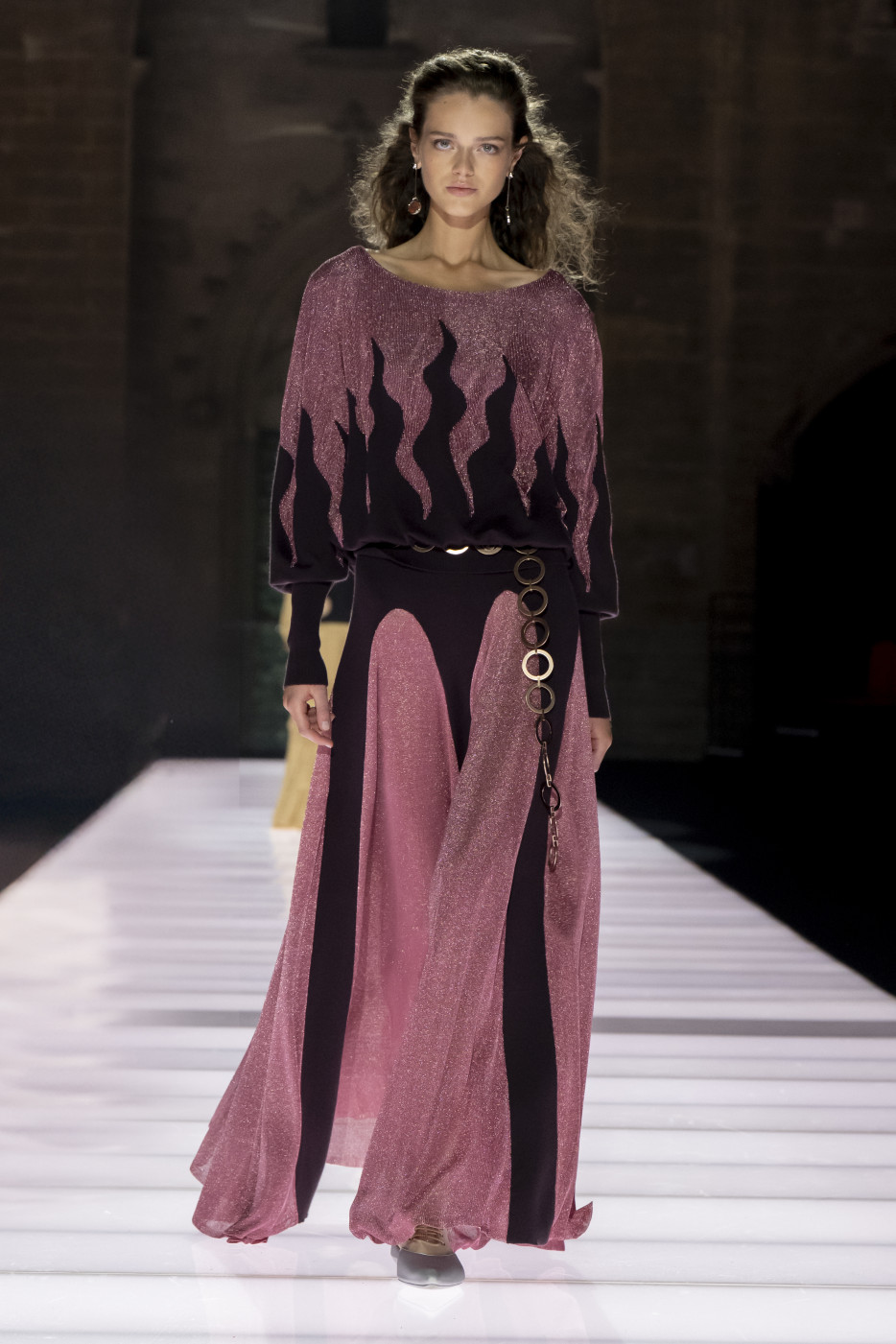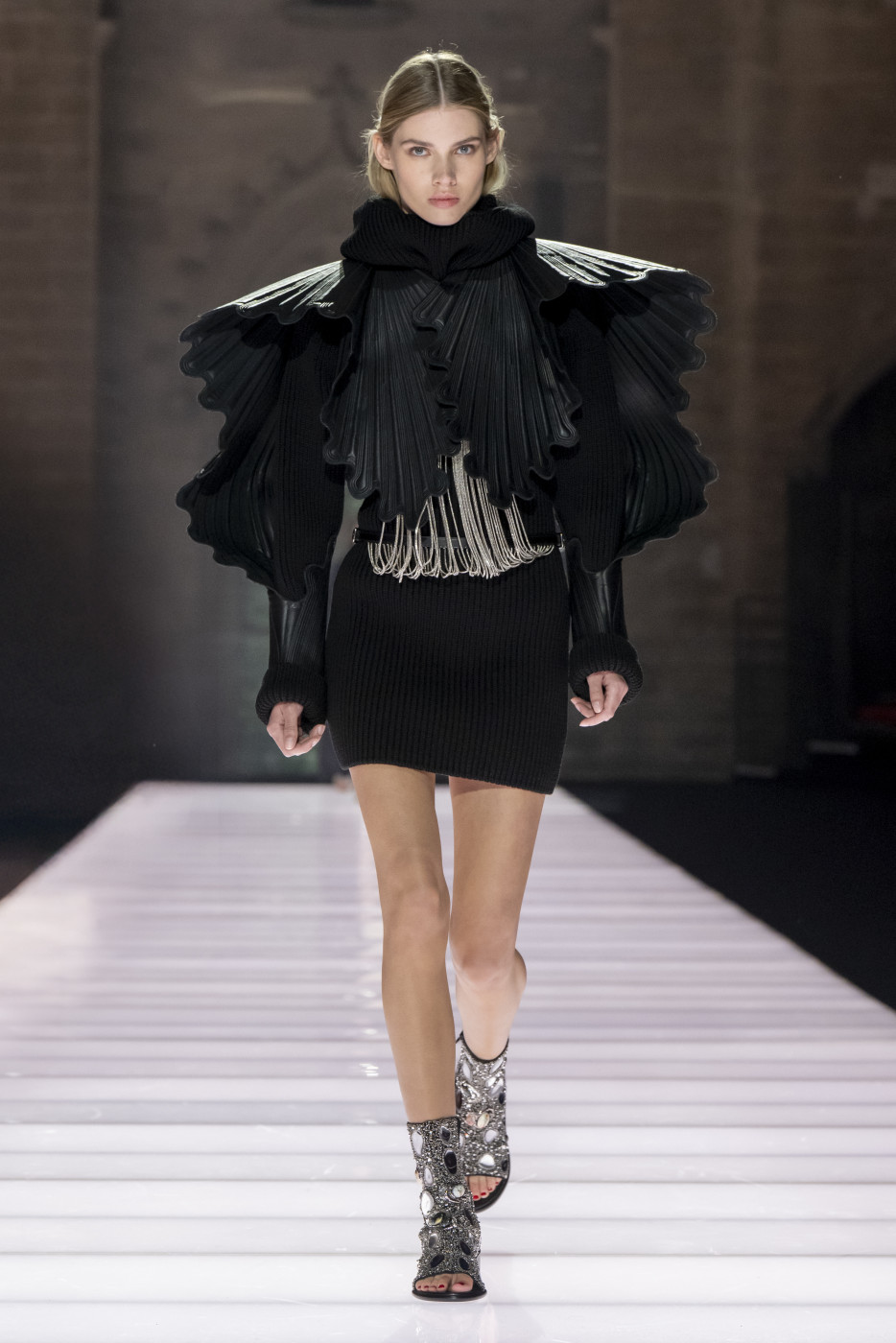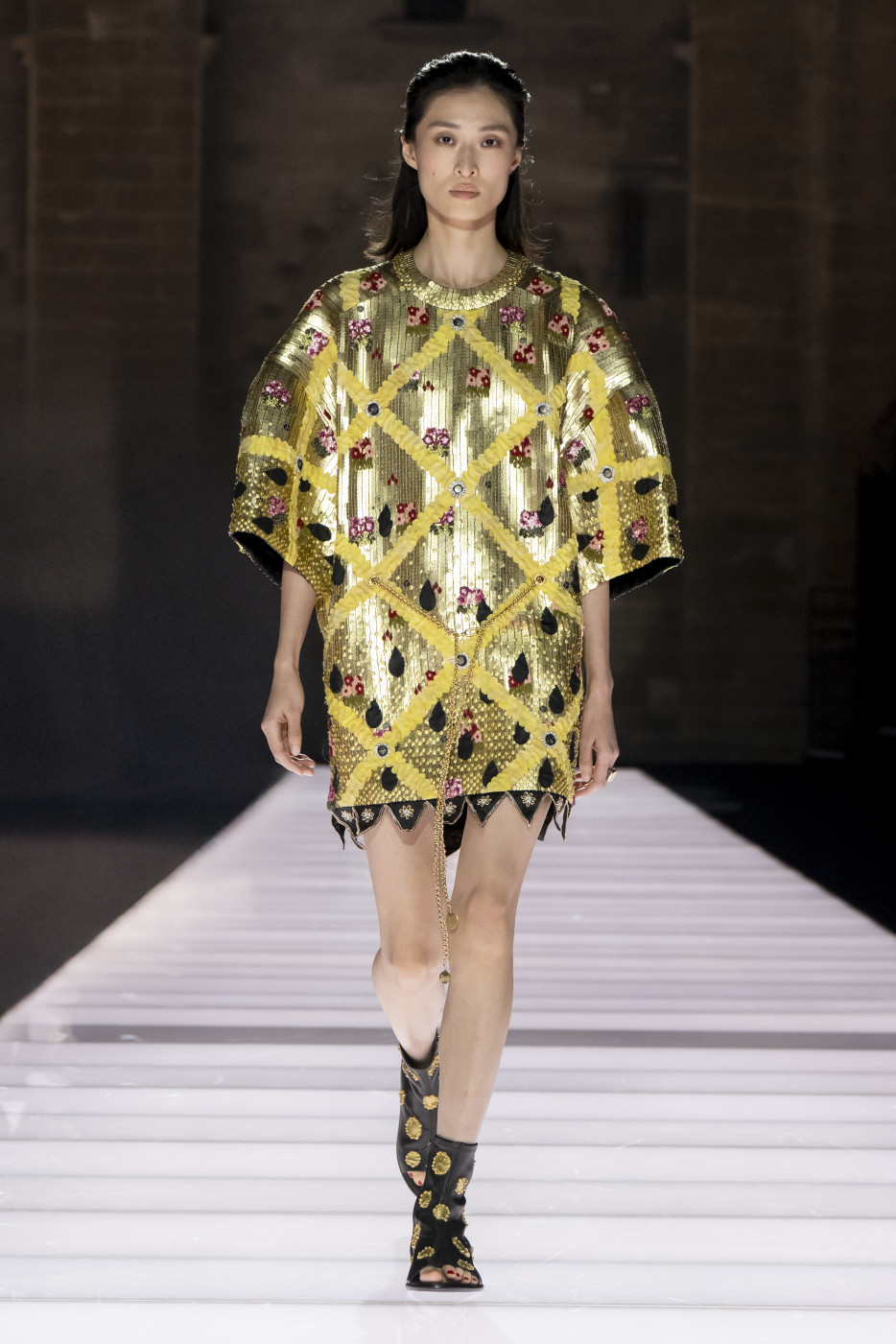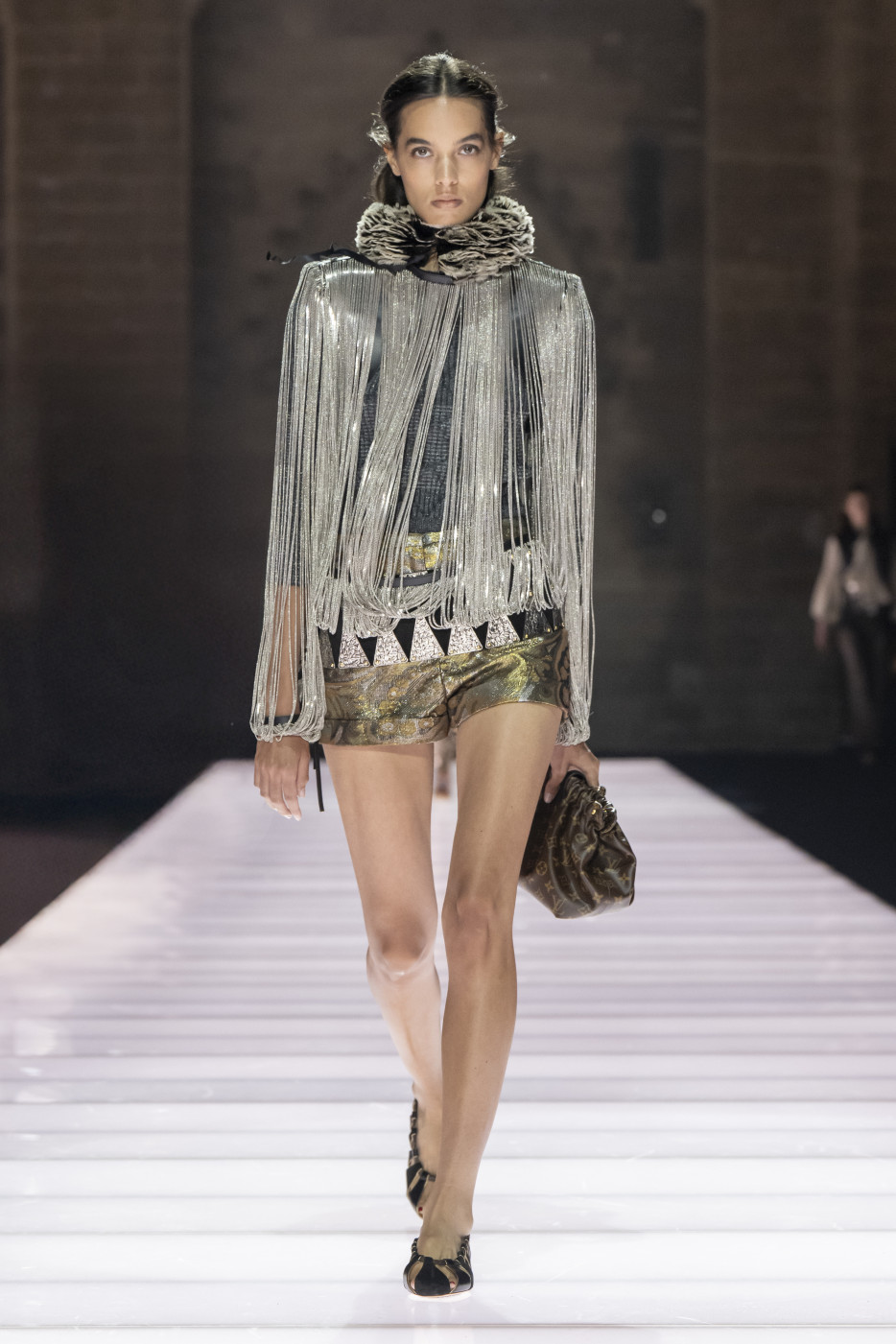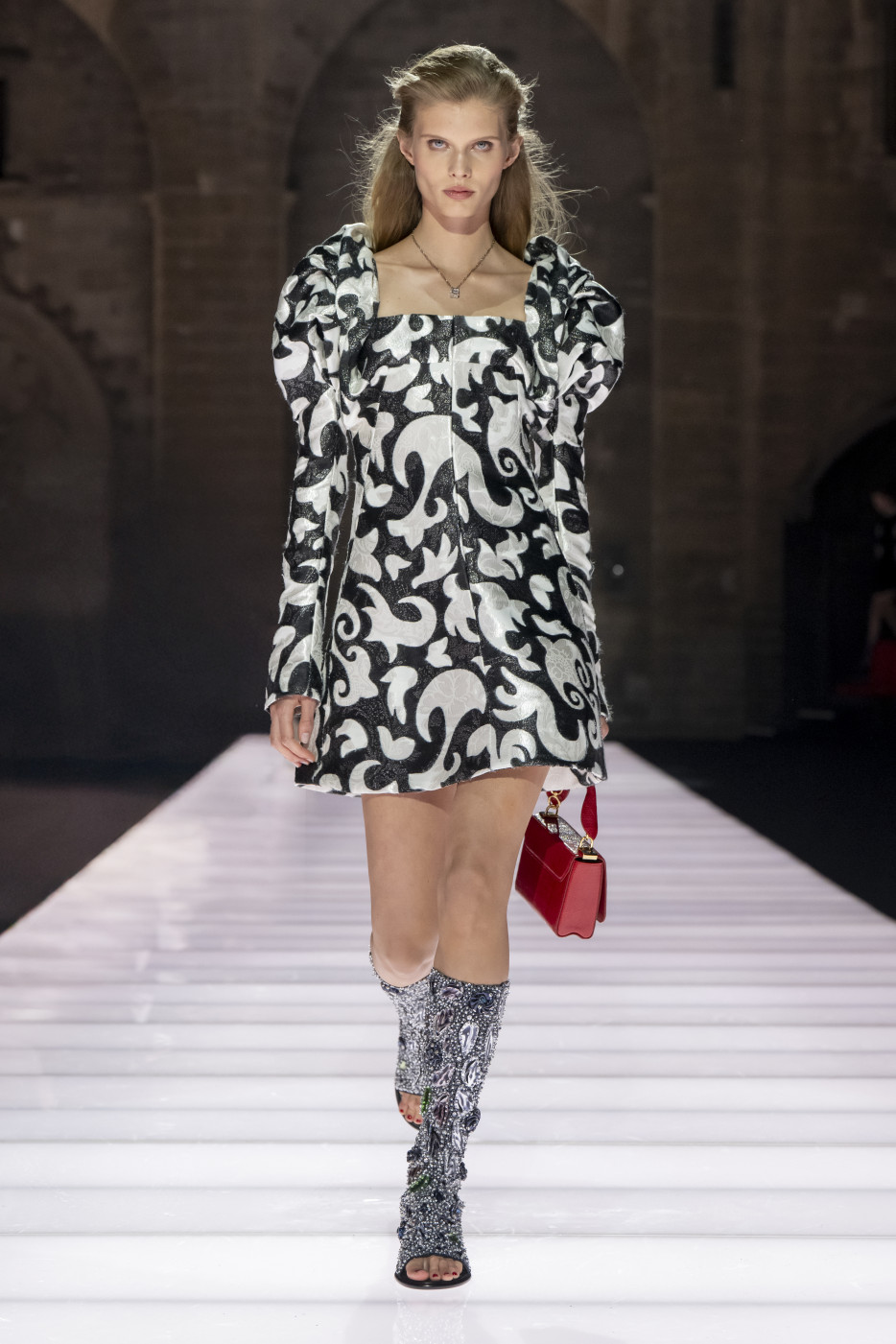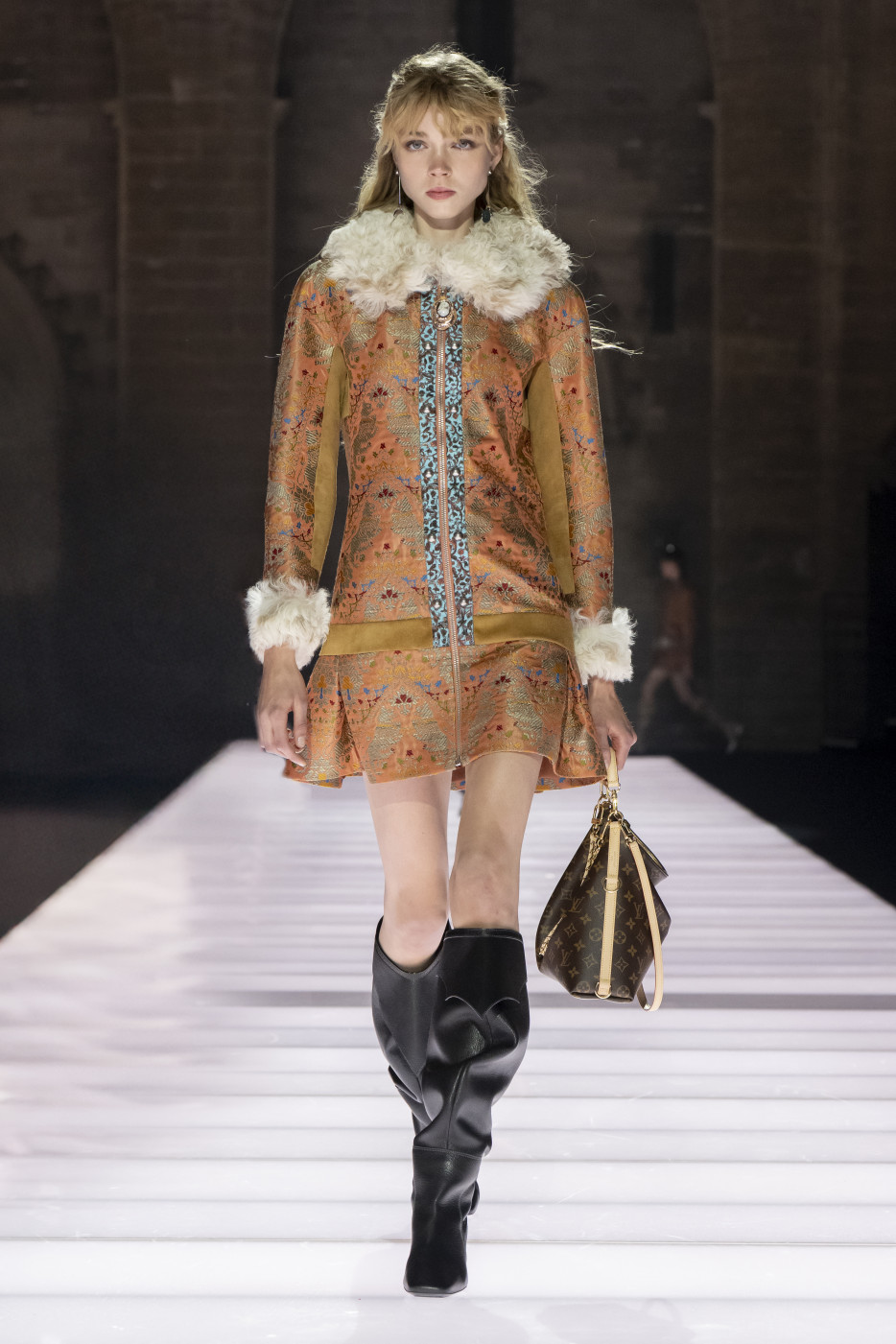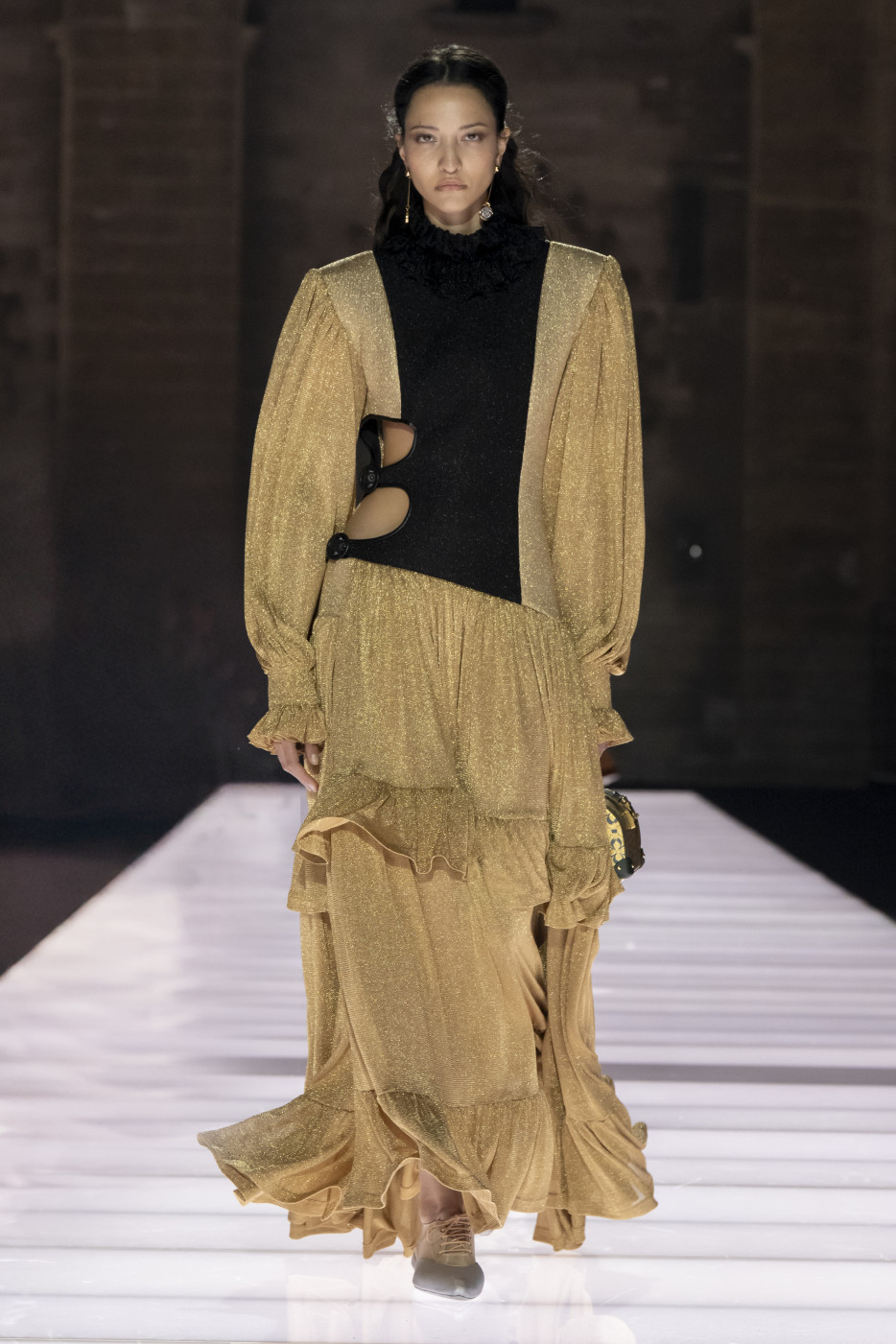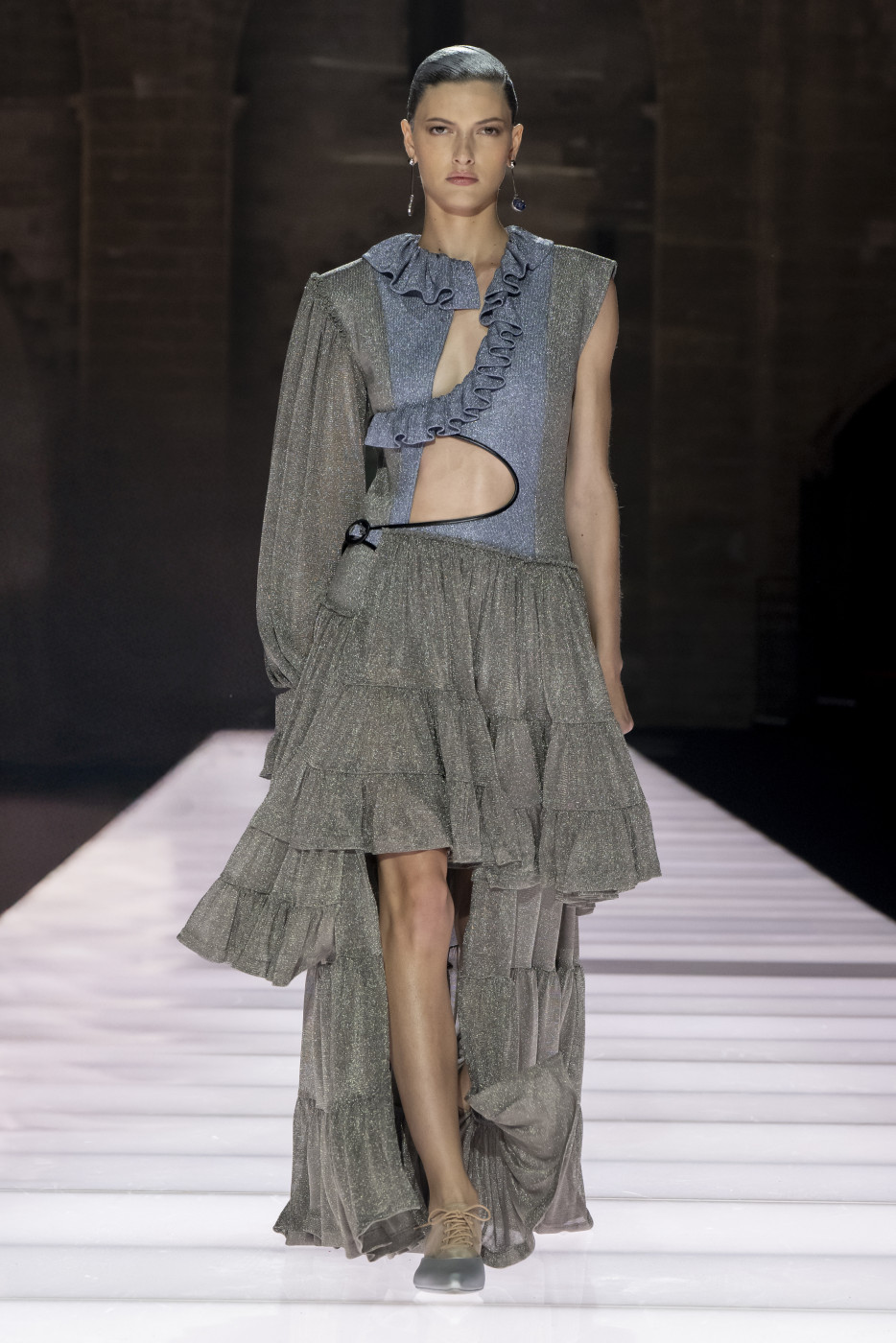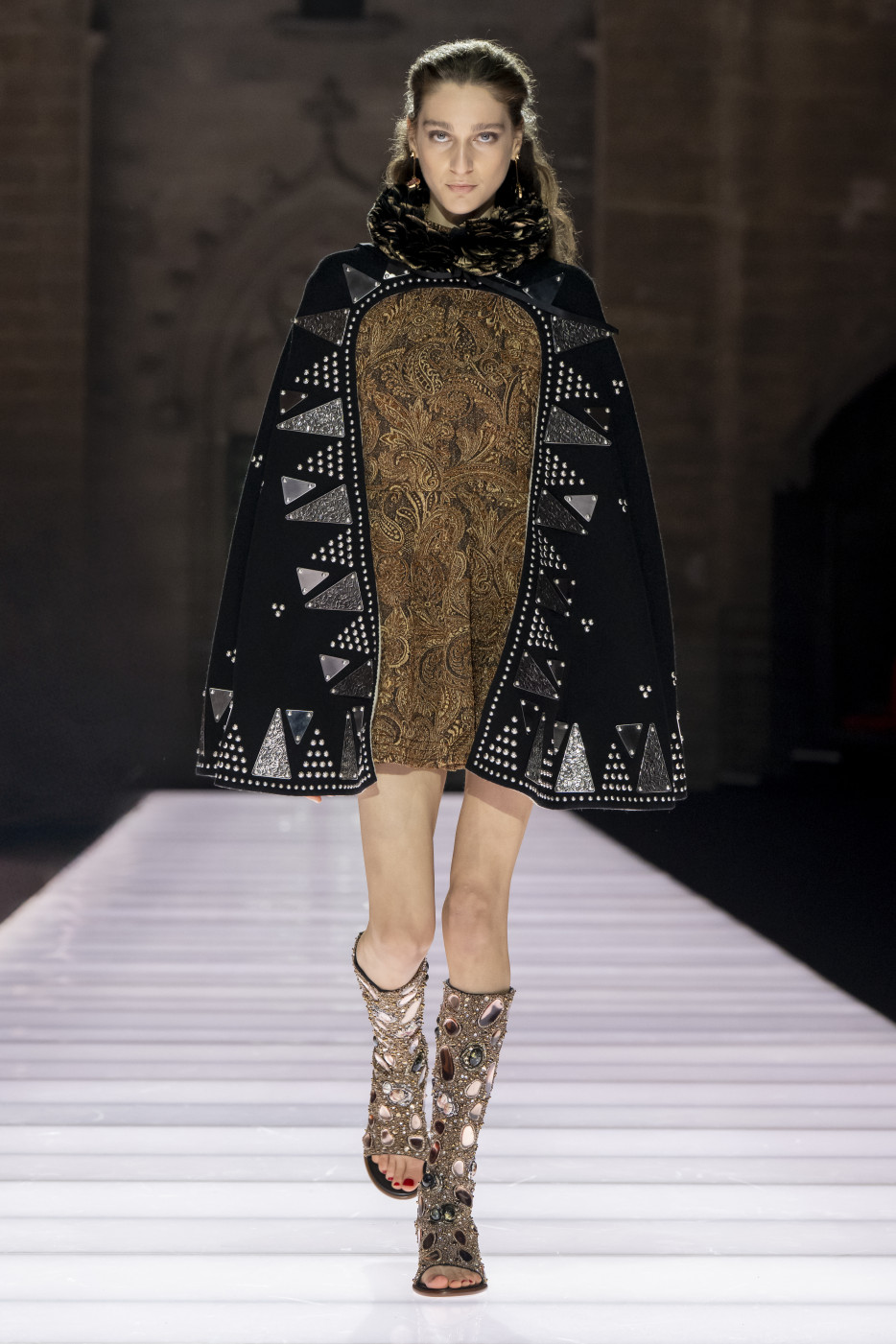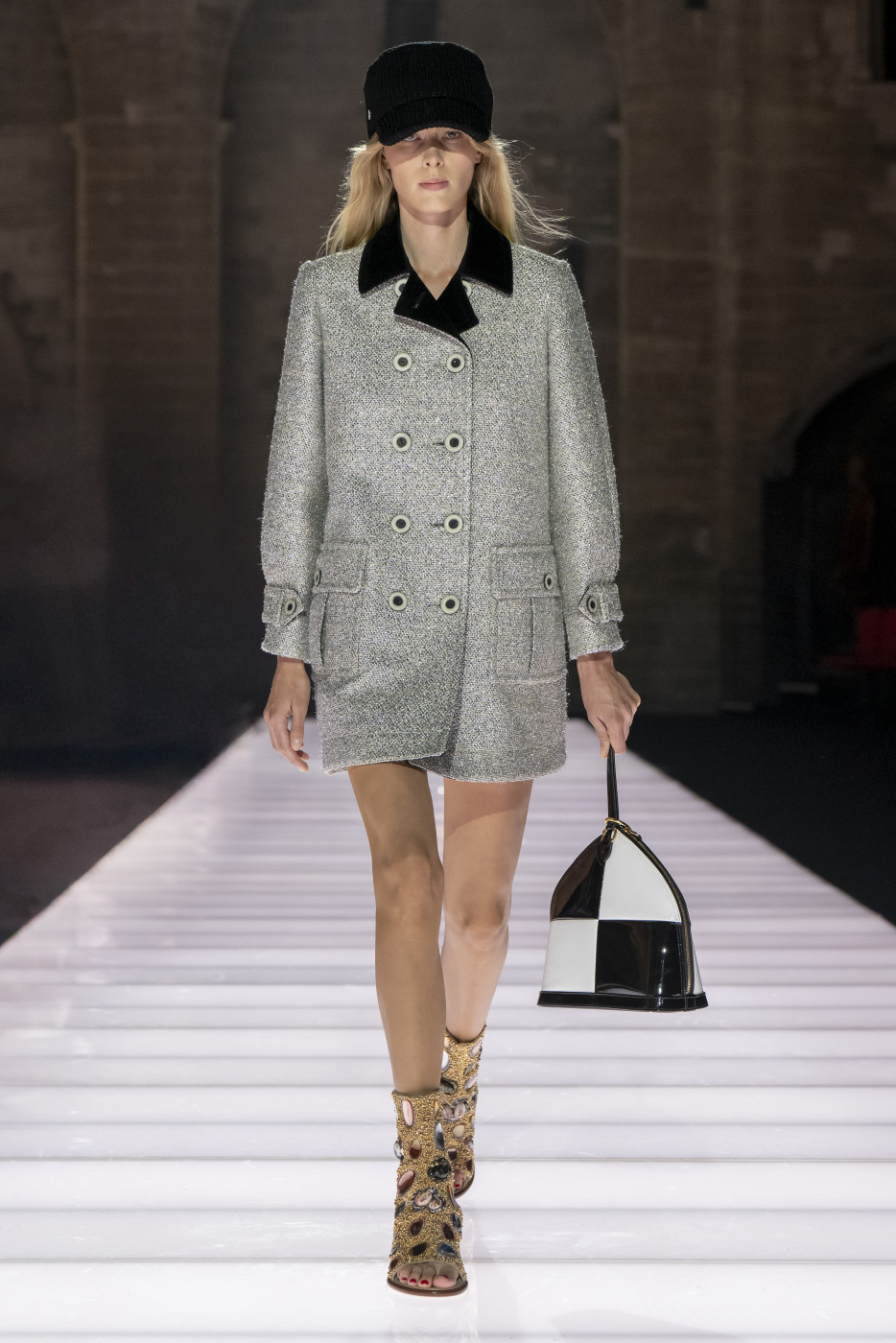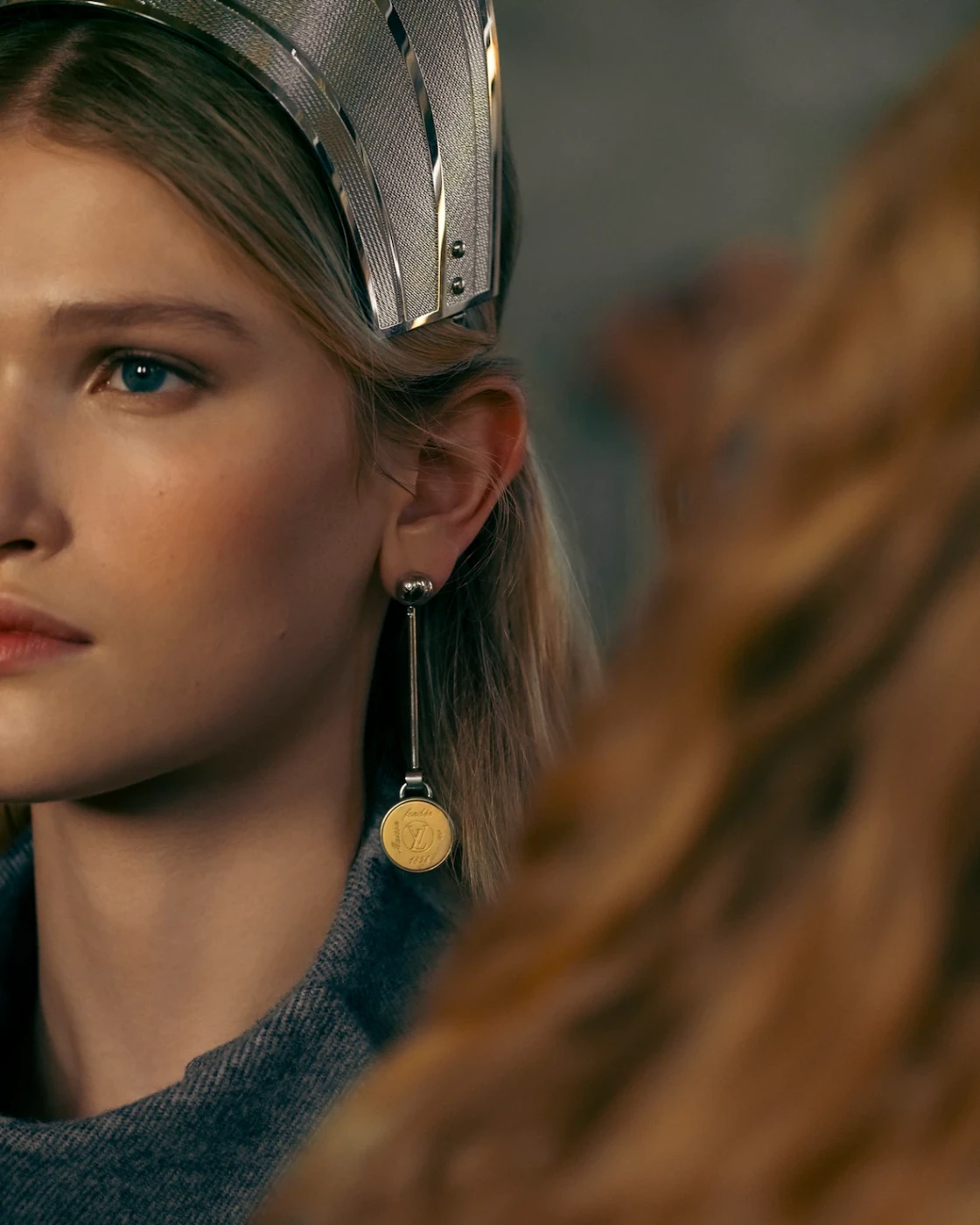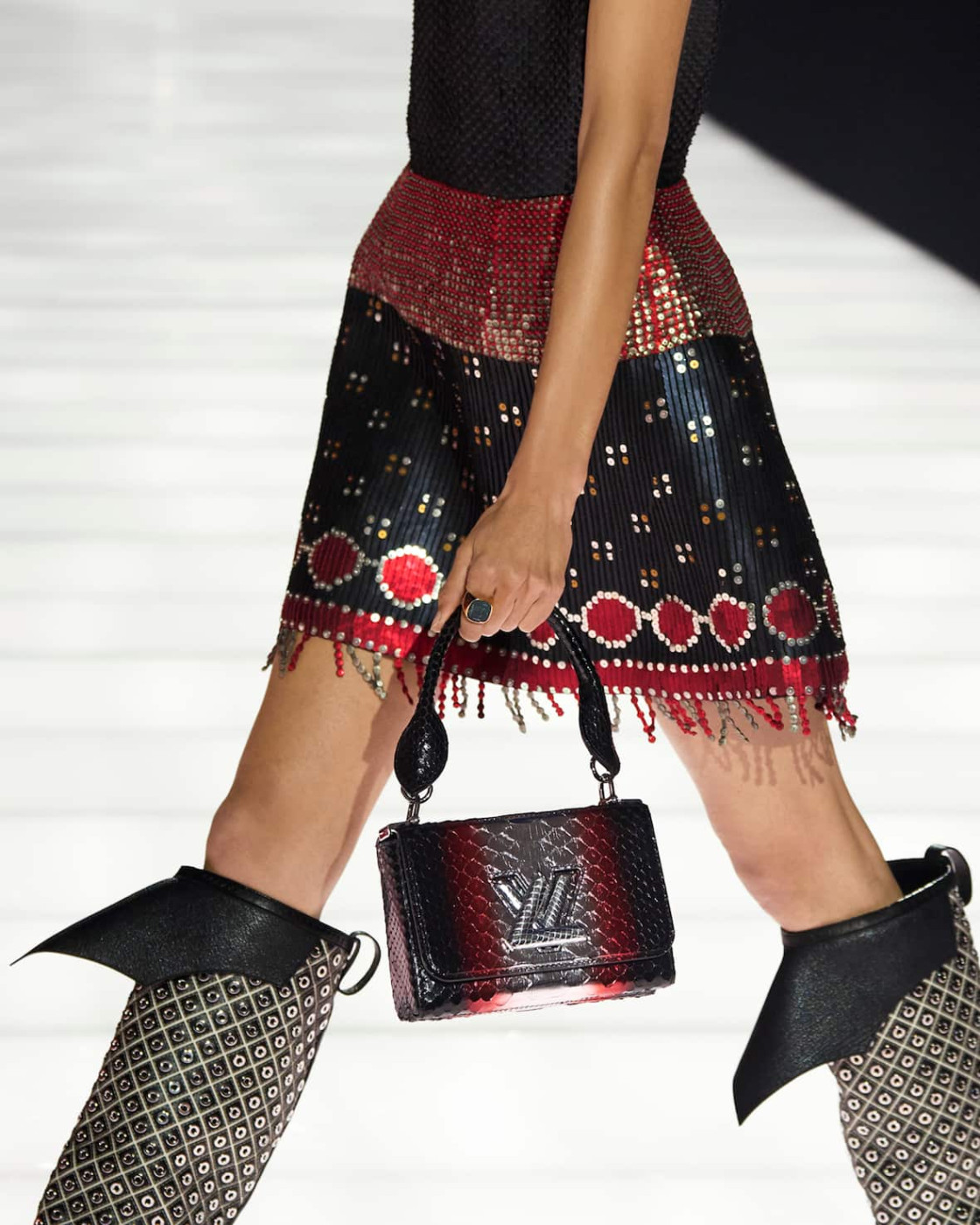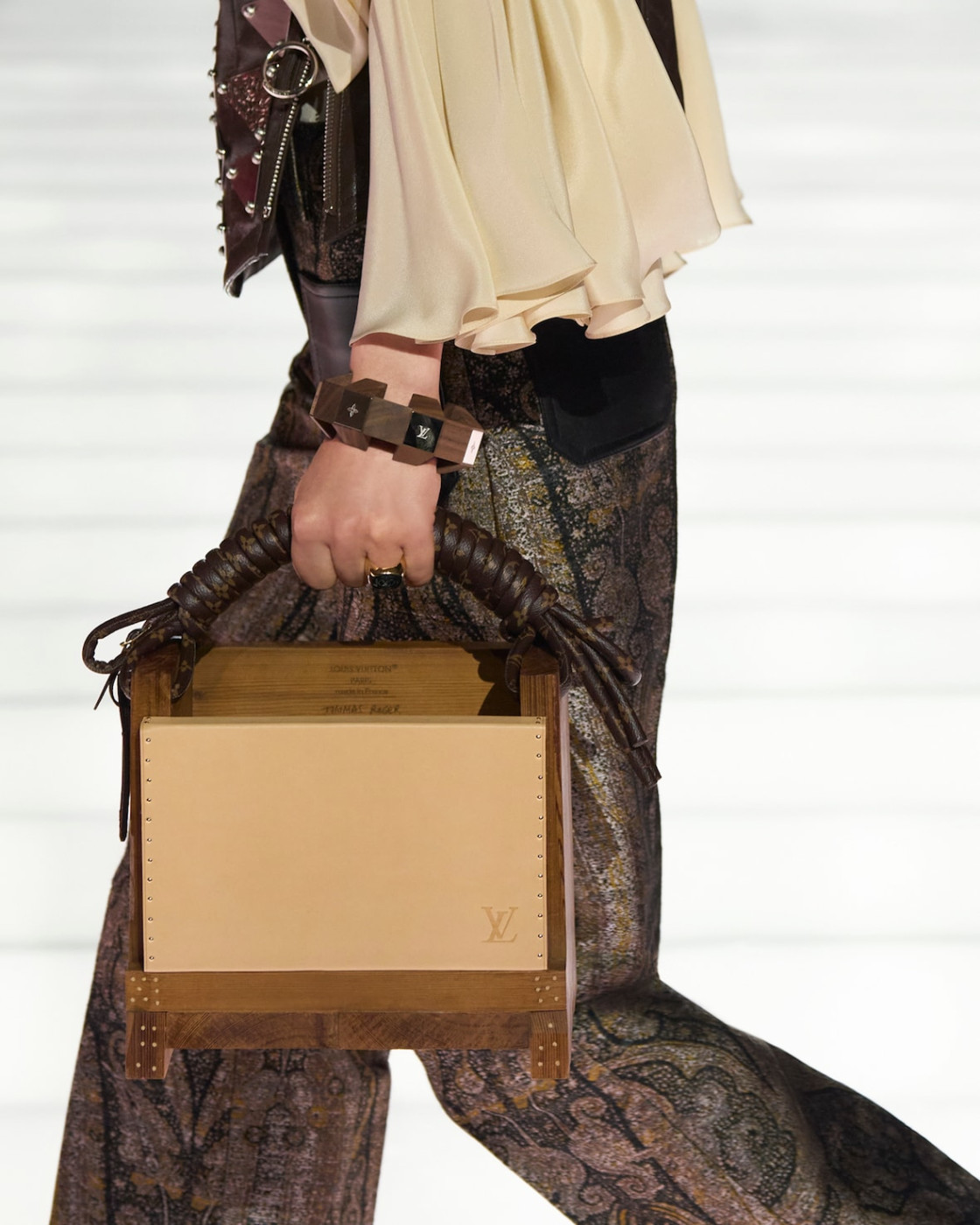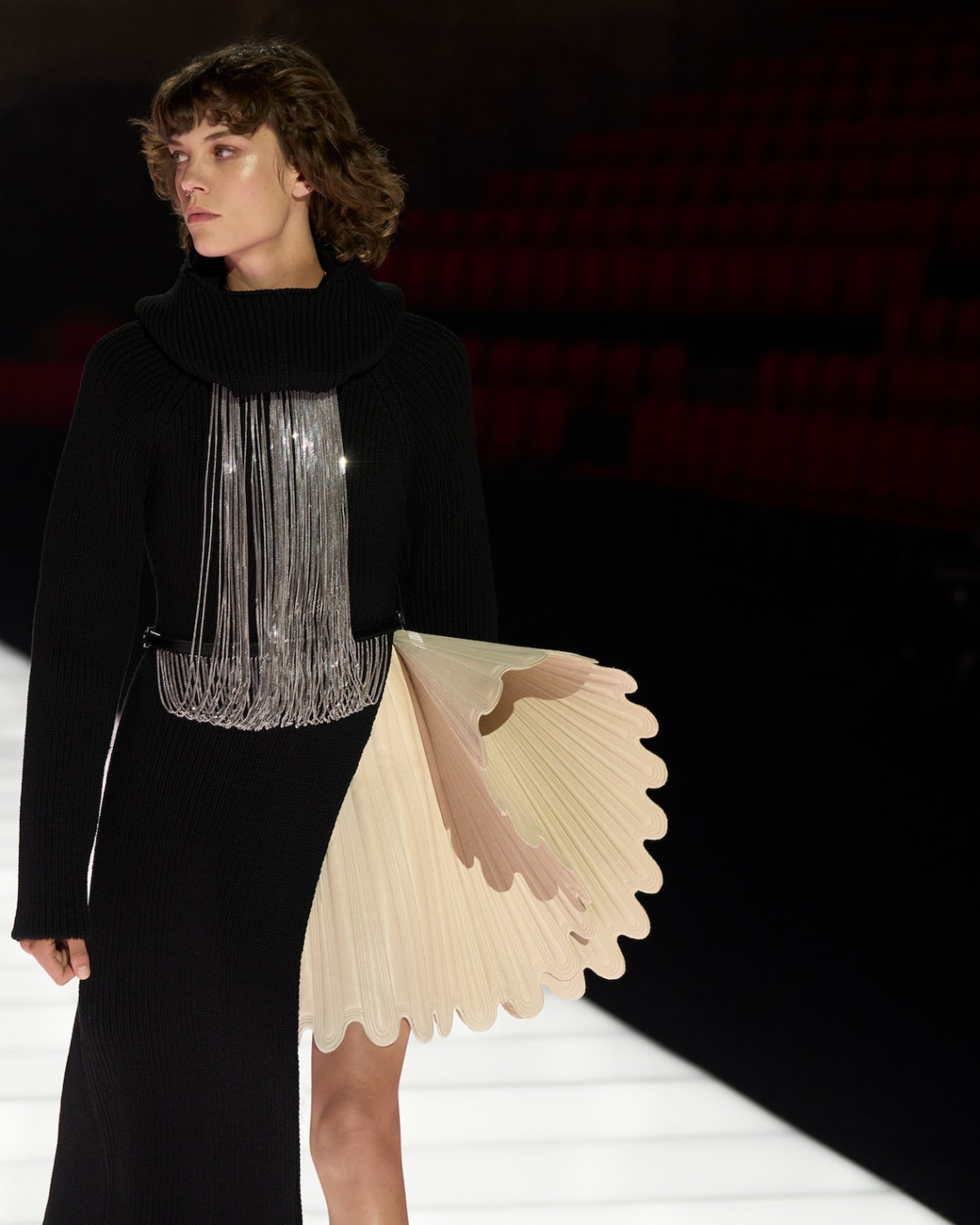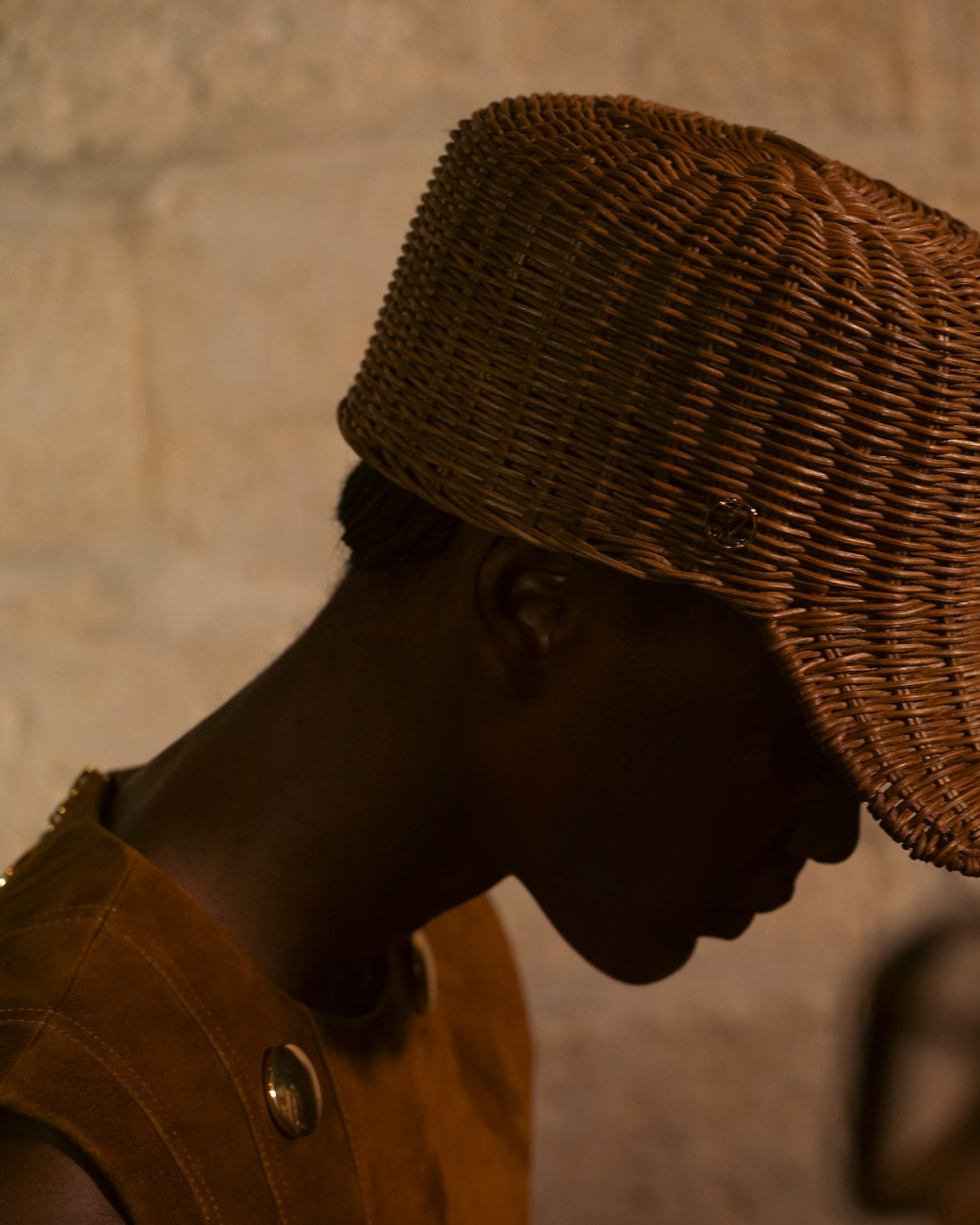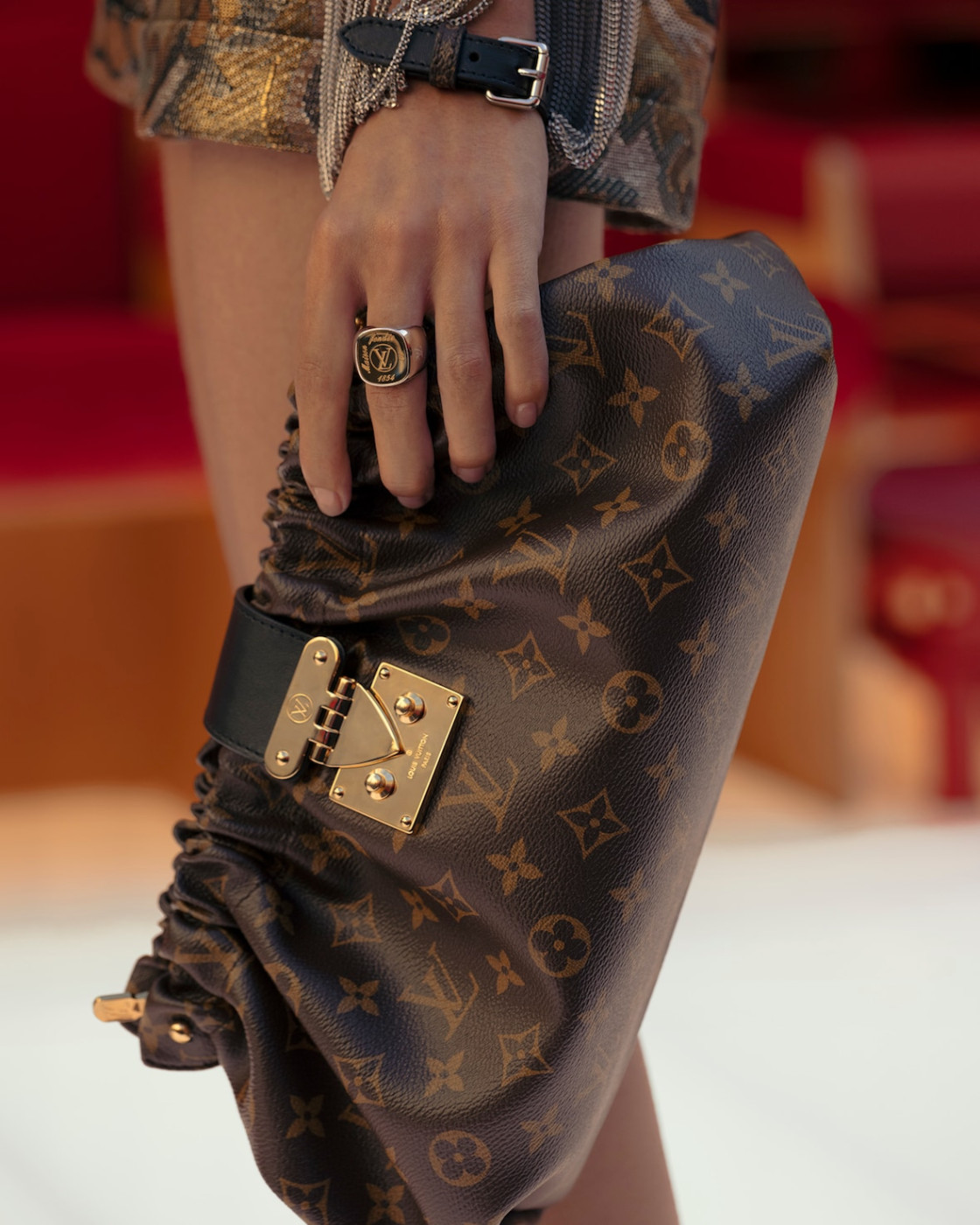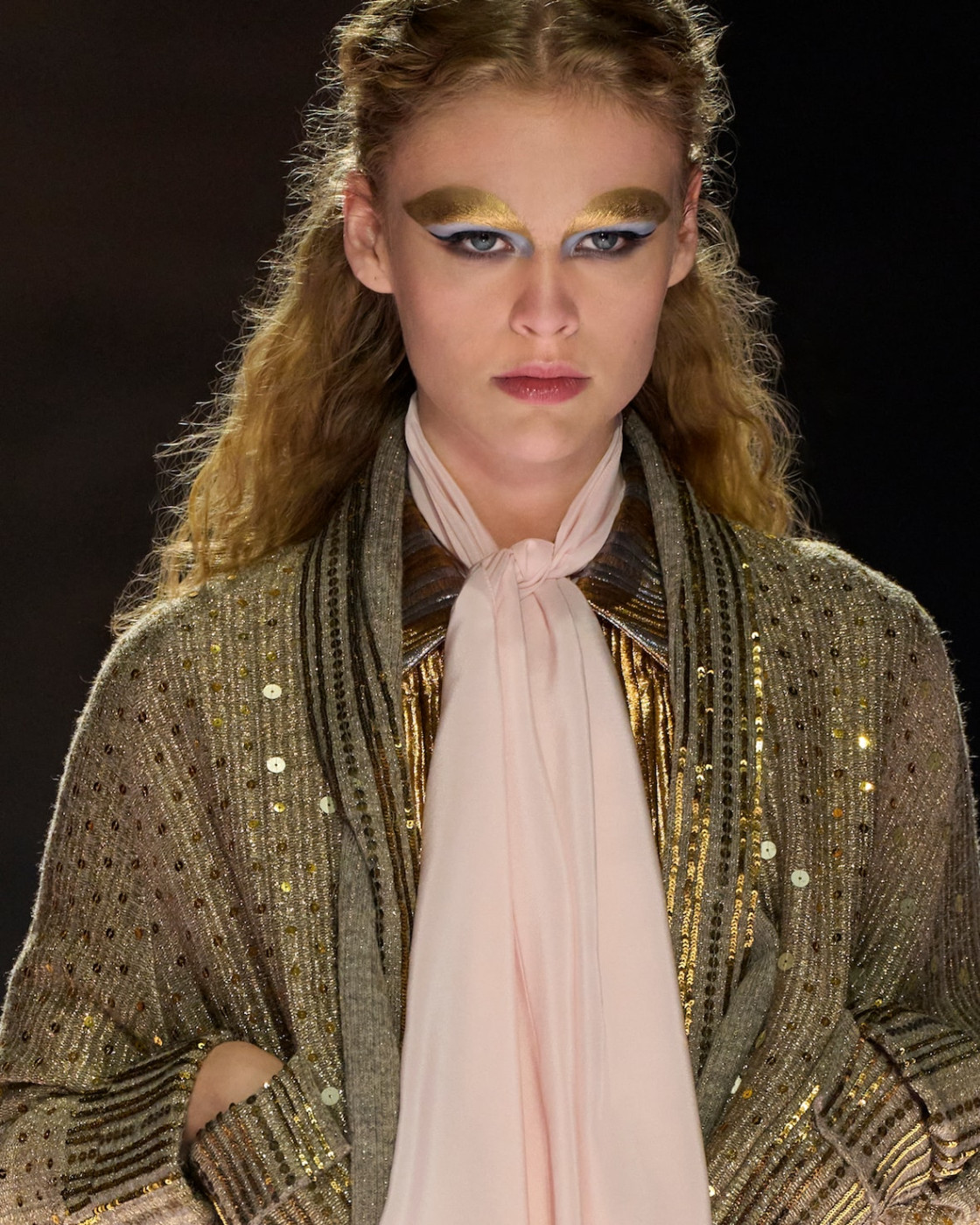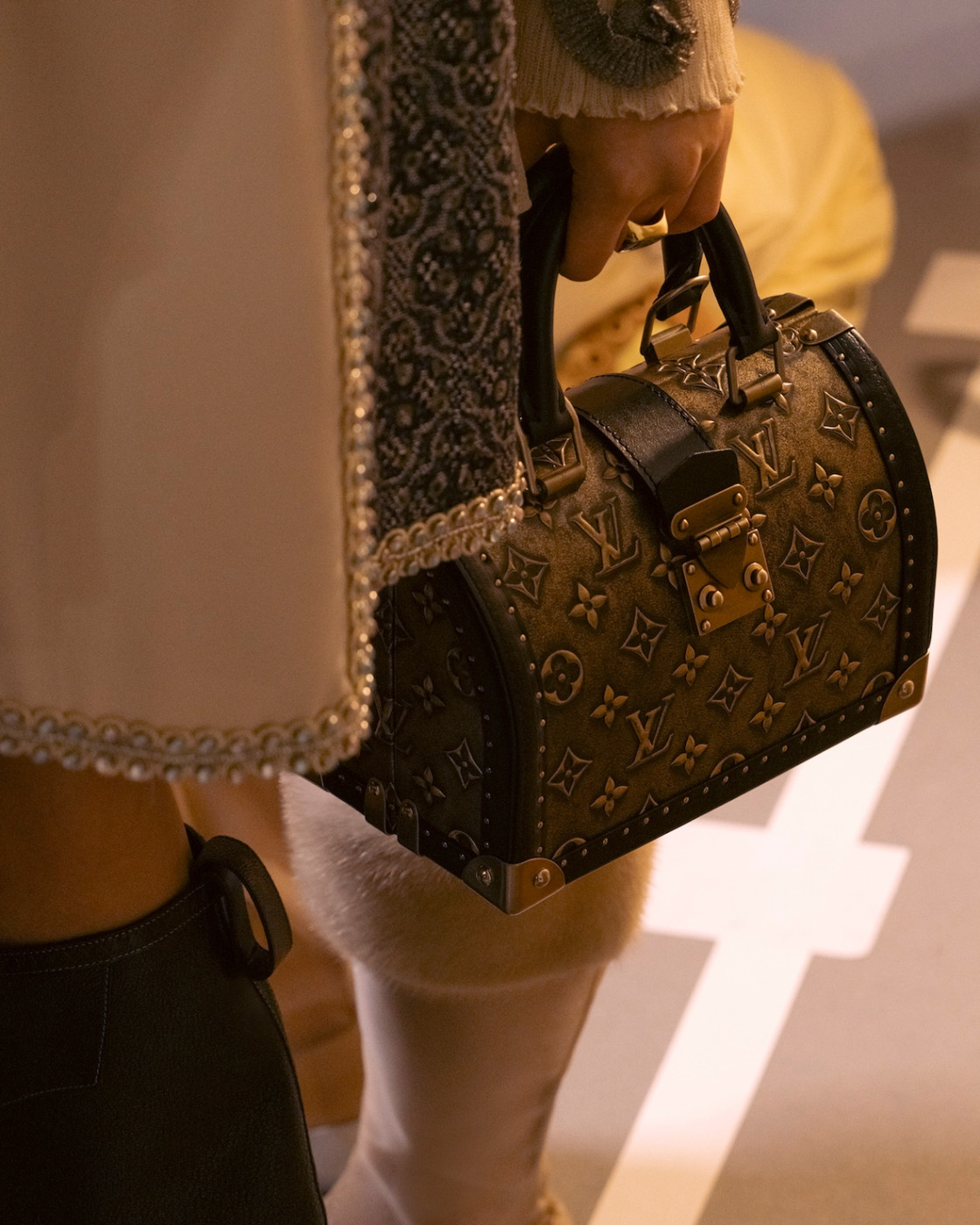
"Avignon Papacy”, Directed by Nicolas Ghesquière Louis Vuitton Cruise 2026
Nicolas Ghesquière could have been a prominent costume designer — such thoughts come to mind when looking at his new cruise collection. The choice of Avignon, which was the seat of the highest church authority for almost 70 years in the 14th century following a quarrel between Pope Bonifatius VIII and the French king Philippe IV le Bel, is not so much connected with those historical events but rather with the fact that it is hosts the greatest theatre event, the Avignon Theatre Festival, every summer. The papal palace itself is one of its central venues. On this stage, under the dramatic darkening sky, the Louis Vuitton Cruise 2026 performance unfolded against the backdrop of rows of red theatre seats.
In this collection, Ghesquière mixed a variety of references: the little dresses of the 60s, the wide ruffles of the 70s, the sharply accentuated shoulder line of the 80s, and the short skirts of his own silhouettes from the 90s. However, it was not the individual decades that determined its general spirit and appearance. The geometric shapes of large details, the richly patterned jacquard fabrics referring to the remains of frescoes on the walls of the papal palace, the capes decorated with pieces of mirror, and low and high boots with open toes — all set against the backdrop of the medieval walls –– brought to mind the costumes that Danilo Donati made for Pier Paolo Pasolini’s films.
That said, Nicolas Ghesquière is not a costume designer (at least, not yet) but a fashion designer, so the theatrical ornateness was counterbalanced by asymmetry. There were obliquely cut wide skirts, dresses with a single puffy sleeve or a pleated wave on one side, cutouts and slits in the most unexpected places, and belts and chains used in the most original ways. Special mention goes to the accessories, which, as is usual with cruise collections, are destined to become real hits: metallized kokoshniks, box-shaped bags, and especially bags in the form of a papal mitre. We can expect that the brand’s clients will chase for these items worldwide. The whole collection looked as if Ghesquière mixed stage costumes and modern fashion pieces in one look, creating his own imaginary theater stage or cinema set.
Let us recall that Ghesquière already created one mini-opera: for the Louis Vuitton FW2020 collection show, a choir of 200 singers dressed in different historical costumes was assembled at the back. At that time, he collaborated with costume designer Milena Canonero, who had worked with Stanley Kubrick (she is Italian, like Donati, and also an Oscar winner). He also worked on his own film set — recall the Louis Vuitton cruise 2023 at the Salk Institute in San Diego, where the long pathway showcasing a panorama of the Pacific Ocean happened to be a perfect temporary runway, along which, against the backdrop of a magnificent sunset view, models walked, reminiscent of characters from some new Dune or Space Odyssey.
The imagination, freedom, and simultaneously consistent clarity of proportions and silhouettes with which Ghesquière manages all these rich cultural layers make him one of the leading fashion designers of our time. But perhaps Nicolas Ghesquière will one day take a bow on a real stage instead of a catwalk — we are sure that no smaller success awaits him there.
Courtesy: Louis Vuitton
Text: Elena Stafyeva


